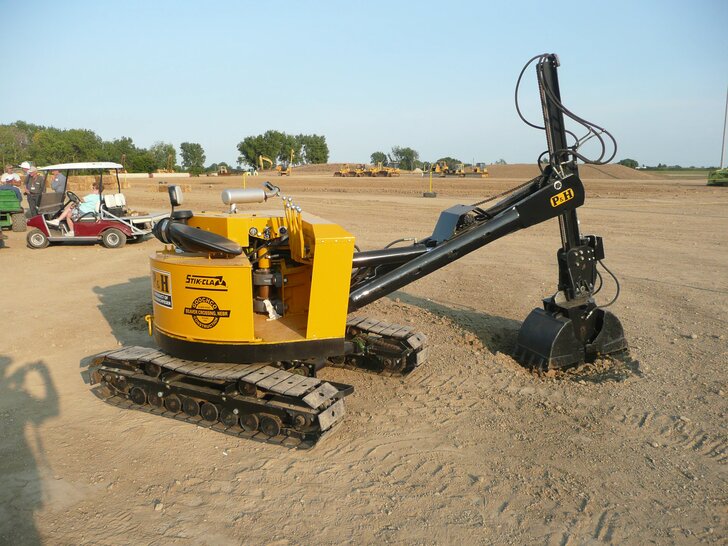by Nick Drew | Tue 15 Aug 2023
Was this the First Version of a Compact Excavator?
We normally associate the American brand P&H (Harnischfeger Corp) now owned by Komatsu, with large cable operated mining shovels and draglines, but back in the mid 1960’s they briefly dabbled with what was probably the world’s first hydraulic mini excavator.
The machine to which P&H designated the name Stik-Clam, was launched in 1965 and was way ahead of its time, even their sales brochure announced it as “Absolutely nothing like it” a statement that could not be denied, as there simply wasn’t anything else like it on the market at that time.
Officially known as the P&H S-20 Stik-Clam, the machine was most probably the very first zero tails-swing excavator, but its business end was quite different from later mini excavators. This concept featured a sliding arm mounted on the boom, not the more familiar boom and dipper arm combination that is the norm these days, it was also, as its name suggests, fitted with a clamshell grab instead of a conventional digging bucket.

Photo: Courtesy of For Construction Pros
The machine which was built in Milwaukee, Wisconsin, had an operating weight of 4,200lbs and featured a Wisconsin air cooled petrol engine to drive the hydraulic pump, offering a power output rating of 24hp. A hydraulic swing motor was fitted to provide continuous 360-degree rotation, in addition to independent track motors, to facilitate steering, the grab also featured a rotation service, these features were considered cutting edge technology at the time, but standard fare in this day and age.
With so many cool features this machine must have shown great potential, however, it was unfortunately too far ahead of its time, and many contractors just couldn’t see the bigger picture of the benefits a compact machine could bring to their business. Just a year after it’s launched the Stik-Clam was withdrawn from production.

Some 20 years later, the Japanese would lead the charge on the mini excavator market, a sector that they have largely dominated ever since, and mini excavators are seen on nearly every construction site in the world today.
Checkout this surviving example of a P&H Stik-Clam in a museum collection.